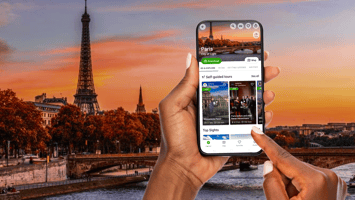Karlovy Vary (Carlsbad), is one of the most famous spa towns in the world: it’s a UNESCO World...
How to create the most captivating audio guide?
Discovering new places while reading information from a mobile phone or even a physical book is not very comfortable. That is why audio guides became so popular. You can enjoy the exploring excitement running through your body and still get all the important information you are seeking. You are able to move around each site without the need to spend even 5 minutes at one spot reading the information board. But audio has to be done properly in order to keep travelers hooked.
.jpeg?width=480&height=320&name=dreamstime_xs_126707308%20(2).jpeg)
Ready to create the ultimate audio guide? Partner with SmartGuide today!
Robot or human voice?
These days, audio can be processed in many ways, with 2 of them being the most popular - robotic and human voice. The text-to-speech function represents immense computer development in the last decades. Computer/robot reading simulates human audio on a way better level than it used to be at the beginning of this millennium. Therefore everyone can be a creator of audio guides without the stress of pronouncing properly or having a "bad voice". Moreover, when you add one sentence to a paragraph, you can re-generate the audio in one click, without the need to record everything again.
On the other hand, having a real person talking to you still cannot be replaced. Why? It has to do with the fact that intonation and emotions are such hard features to simulate. When a friend of yours tells you about their holiday what gives it additional value? Yes, exactly - the excitement you can hear or even feel thanks to the narration. Therefore human audio is still considered the best possibility.
So, how to create the most captivating audio guide?
If you decide to go further with the option of human audio, be prepared for a bit more demanding process but all the more blue-chip results. So, what to bear in mind?
1. Keep the "text to read" by the voice actor short and catchy.
2. Do not leave out the description of each location: Should the traveler look up? Then you have to tell him. Is there something interesting to the opposite side from e.g. church on the main square? Then tell the explorer to turn around. Remember there is no one pointing to those bits when listening to the audio guide.
3. Jokes and fun facts are welcome (people enjoy these the most)
4. Show the enthusiasm
5. Make sure the audio is recorded by someone with an enjoyable voice.
6. Intonation and pacing are key.
Too complicated?
Does it all seem too complicated? Don't worry and rather get inspiration from a live tour guide. What does (s)he emphasizes, where should be a natural speech pause, where the location directions should be present etc? How to do that?
Record the tour with a live guide and focus on their tone of voice, body language, and little jokes. And do this prior to even finalizing the text which will be read by the actor. Why? It will be way easier to see what is really important and what you should emphasize in the guide.
This video is also the best possible source of inspiration for the actor - it will help him/her to understand the space and scale of the sight/tour.
Avoid basic mistakes
Why do some audio guides sound boring even though they are human audio? There are too many names and dates from history. Remember, the audio tour is not a history or geography lesson - you have just a few moments to grab the listener and engage him or her.
Speaking about boredom - emotions are really important when talking but remember, nobody wants to listen not only to flat and boring voices, but no one enjoys overexcited speech. Therefore have the need for emotions in your mind but do not over-exaggerate!
Pro tip! Don't sit while recording! Standing up allows the actor to be animated, thus his/her voice will be energetic and more engaging.
Contact us to transform your services with SmartGuide!
.png?width=300&height=69&name=Logo%20SmartGuide%20horizontal%20(1).png)
.jpg?width=606&height=341&name=CTA%20banners%20for%20SMG%20blog%20(5).jpg)
.jpg?height=200&name=20220502_133332%20(3).jpg)
.png?height=200&name=cms-laptop-map-750w%20(2).png)
